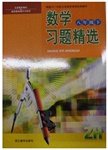题目内容
You either have it, or you don’t-a sense of direction. But why is it that some people could find their way across the Sahara without a map while others can lose themselves in the next street?
Scientists say we’re all born with a sense of direction, but it is not properly understood how it works. One theory is that people with a good sense of direction have simply worked harder at developing it. Research being carried out at Liverpool University supports this idea and suggests that if we don’t use it, we lose it.
“Children as young as seven have the ability to find their way around,” says Jim Martland, research director of the project. “However, if they are not allowed out alone or are taken everywhere by car, they never develop the skills.”
Jim Martland also emphasizes that young people should be taught certain skills to improve their sense of direction. He makes the following suggestions:
If you are using a map, turn it so that it relates to(与……有联系) the way you are facing.
If you leave your bike in a strange place, put it near something like a big stone or a tree-something easy to recognize. Note landmarks on the route as you go away from your bike. When you return, go back along the same route.
Simplify(简化) the way for finding your direction by using lines such as streets in a town, streams, or wells in the countryside to guide you. Count your steps so that you know how far you have gone and note any landmarks such as towerblocks or hills which can help to find out where you are.
Now you will never get lost again!
小题1:Children have the ability to find the way around when they are ______ years old.
小题2:Which of the following things cannot be used as landmarks?
小题3:What does the underlined word “emphasize” mean in the passage?
小题4:Scientists believe that __________.
小题5:What may be the best title of the passage?
Scientists say we’re all born with a sense of direction, but it is not properly understood how it works. One theory is that people with a good sense of direction have simply worked harder at developing it. Research being carried out at Liverpool University supports this idea and suggests that if we don’t use it, we lose it.
“Children as young as seven have the ability to find their way around,” says Jim Martland, research director of the project. “However, if they are not allowed out alone or are taken everywhere by car, they never develop the skills.”
Jim Martland also emphasizes that young people should be taught certain skills to improve their sense of direction. He makes the following suggestions:
If you are using a map, turn it so that it relates to(与……有联系) the way you are facing.
If you leave your bike in a strange place, put it near something like a big stone or a tree-something easy to recognize. Note landmarks on the route as you go away from your bike. When you return, go back along the same route.
Simplify(简化) the way for finding your direction by using lines such as streets in a town, streams, or wells in the countryside to guide you. Count your steps so that you know how far you have gone and note any landmarks such as towerblocks or hills which can help to find out where you are.
Now you will never get lost again!
小题1:Children have the ability to find the way around when they are ______ years old.
| A.5 | B.6 | C.7 | D.8 |
| A.Tower blocks. | B.Hills. | C.Wells. | D.Bikes. |
| A.To give special importance to something. |
| B.To express thanks for somebody. |
| C.To understand or become aware of a fact. |
| D.To admire somebody. |
| A.some babies are born with a sense of direction |
| B.people learn a sense of direction as they grow older |
| C.people never lose their sense of direction |
| D.everybody has a sense of direction from birth |
| A.A research on direction. |
| B.A sense of direction. |
| C.People’s ability of finding the way. |
| D.Scientists’ research on skills. |
小题1:C
小题2:D
小题3:A
小题4:D
小题5:B
试题分析:这篇短文重点讲述了人们与生俱来的方向感的问题,作并就如何提高自己辨别方向的能力提出了几点建议。
小题1:根据第三段“Children as young as seven have the ability to find their way around,” says Jim Martland, research director of the project.描述,可知选C。
小题2:根据短文第最后一段Simplify(简化) the way for finding your direction by using lines such as streets in a town, streams, or wells in the countryside to guide you.描述,结合常识,能够移动的物品不适宜作为地标,故选D。
小题3:联系本段下文描述,可知这个单词是强调的含义,故选A。
小题4:根据第二段Scientists say we’re all born with a sense of direction, but it is not properly understood how it works.描述,可知选D。
小题5:这篇短文重点讲述了人们与生俱来的方向感的问题,故选B。
点评:本文浅显易懂,层次分明,学生很容易把握文章中心内容。答题中注意带着问题阅读短文,一般就能顺利找出答题依据。对于不能直接找到根据的问题注意联系上下文,根据短文中心总结出正确答案。

练习册系列答案
 习题精选系列答案
习题精选系列答案
相关题目